Back in July, I visited the ruins of the Roman fort and town of Vindolanda in Northumberland. At the time, the museum was very busy, and I did not feel safe with the social distancing measures, so I did not stay for very long and decided to return. I returned to Northumberland in August, so I decided to visit the museum at the end of the day in order to see what I missed. I had previously looked around the The museum was quiet at this time, so I was able to freely look at the exhibits without groups of other people, and I suggest readers who are looking to visit the museum should visit late in the day; I easily spent four hours exploring the museum and ruins. For information about the ruins of the town and fort, see my post here: Hadrian's Wall: Visiting the Roman Fort Town of Vindolanda.
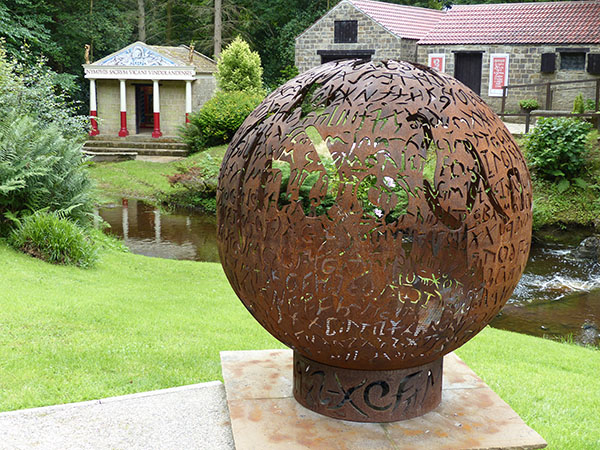
Vindolanda is a unique setting that has uncovered many secrets of Roman life. Wood, leather, and other perishable items dating from around 2,000 years have been discovered here. The Romans had renovated their buildings, and upon renovations, they had placed their trash on the ground while they built up for new foundations, covering the trash with clay to keep it safe and dry. Some of the best artefacts discovered from Roman times has been found here at Vindolanda, which is located within the northern boundary of the Roman empire.
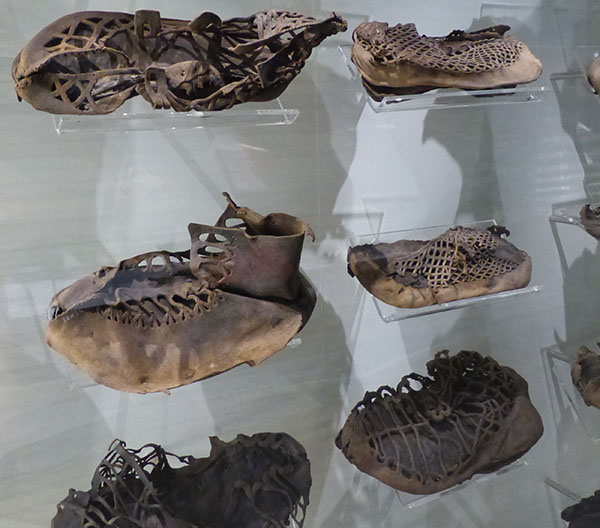
The museum at Vindolanda contains many of these artefacts. A large collection of different shoes gives an insight into the individuality of the wearers with different patterns carved in (and wooden clogs were used in the bath houses). Leather was also used to create boxing gloves, tents and bags to hold tools, very similar to what we use today. In fact, looking at all of the items, I feel that the people who lived 2,000 years ago were very similar to us. In fact, one of the leather items discovered is a little mouse cut from leather cloth. Was this just a leather-maker's fun or an idea at creating an item for a child? Was it used to help teach a novice how to cut leather?
A selection of pieces of armour and weapons of various type were also on display as well as a human skull that was found in a ditch and likely placed on display as a warning. The other human remains in the museum are the remains of a young child of about ten years of age who was discovered buried beneath one of the barrack rooms.
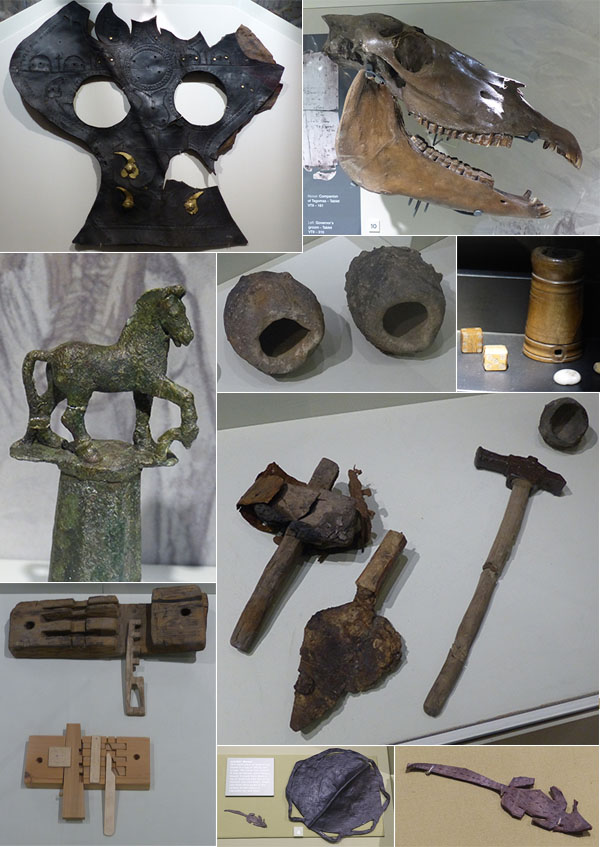
Items include leather for a horse, a horse's skull, a horse trinket. One section was on locks with wooden and metal lock mechanisms being discovered. The Romans also used a passcode for each day, and this would be required in order for others to get into various areas in the fort. A selection of crucibles is on display; these are a few jars of different sizes of pottery fired to heat up metals. Included are also personal entertainment items, such as game pieces (dice) and a wooden container to store these pieces in. Lanterns were also discovered; many of these were made of pottery, but there are others made of metal.
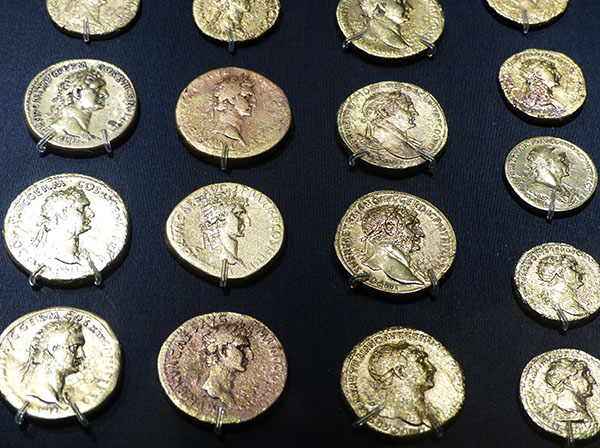
A room in the museum is dedicated to coins found.
Soldiers carried personal items, such as combs and needles in a wooden case. They had a kit bag and needed to make repairs to their clothing; this was probably done while they were out on patrols instead of in the towns where it perhaps they could use someone in the trade.
The cloth that they wore of wool would have been dyed. Yellow and brown were probably popular as well as grey, and they could also dye red.
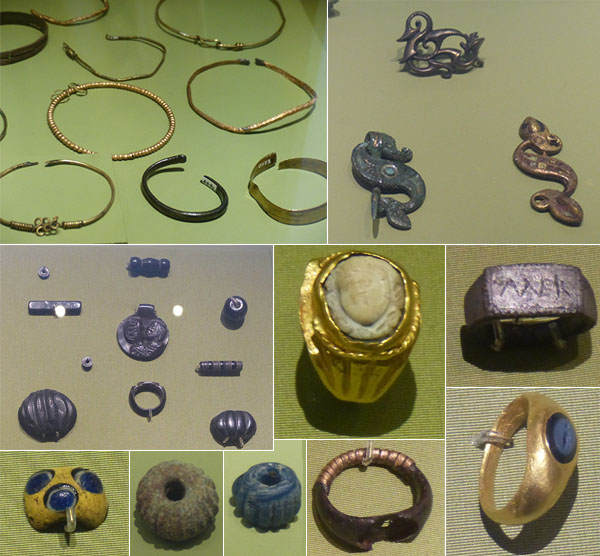
Jewellery was also discovered, and each piece is personal and individual. This shows the tastes of the wearer and the style of the times. Jet was a popular mineral used for buttons, beads and other items. Buckles were commonly discovered as well as bronze pieces that held glass between intricate designs. Glass beads are commonly found, and many of these beads were made with one colour of glass with a dot of a different colour of glass in a pattern around the bead; this was apparently to ward off "evil eye" (envy/jealousy). I wonder how the personal jewellery items became lost to the owner. Perhaps they were stolen. They could have fallen off the wearer or placed on a table or in a dish which got tipped onto a floor and carried out or buried with the moss and bracken that was used to cover the floors of the rooms.

One of the most interesting items is a glass bowl painted with figures. It is known as the "Gladiator glass" for the image painted on it. The item was broken in antiquity and discarded, and two segments of it have been discovered in different places. The item had come from the Rhineland, showing the blend of culture in the Roman towns and forts in Britain.
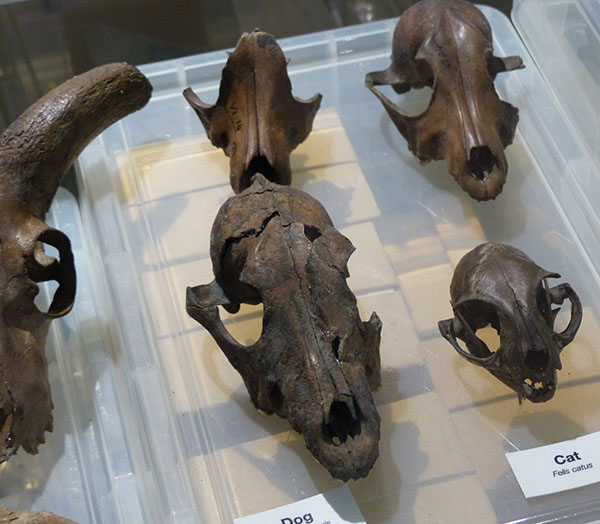
There is a room of bones of animals discovered at Vindolanda. Skulls on display include cattle, goat, deer, sheep, dog, and cat. Later in the museum, someone identified some of the breeds of dog kept by the Romans, and there was actually a pretty wide array of dog including hounds, spaniels, and terrier breeds. The cat skull shows that the Romans had cats; perhaps the cats were kept to keep away rodents or perhaps they came as pets or opportunists.

One of the items on display is a hairnet made of cloth, and there are a selection of combs, some within a leather case, and pins.

There is also a selection of religious items, fertility items, animal/votive tokens and casts or moulds to create figured by pouring metal into them.

Another interesting item discovered is a timekeeping piece, the Calendrical Clepsydra. The item somehow measured water by allowing the water to drip through small holes, and the water level could determine what the time was. It could record the hours of the day based on the month and time in the month.

One room at the museum has a display of some of the items discovered made of wood. These include furniture, wheels, barrels/lids, bowls, tools, pipes, doors, toy swords, and a toilet seat that was probably in the commander's house. Some of the items contain writing or grafitti. It appears that some of the numerals and letters was a stamp made of metal that could be placed in heat to burn the symbol in place. One of the items is a personalised workshop desk, and visitors can see the stamps that had been punched into the item over years of use. Some of the boxes have designs carved into them, such as the lid with a design of a peacock.
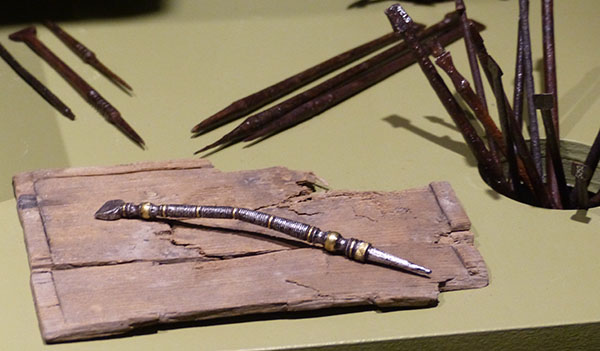
One of the most interesting items of the museum are the Vindolanda Tablets. These tablets were messages carved into pieces of wood and then stored in a box. Several of these were discovered preserved, giving an insight into some of the inhabitants and their lives 2,000 years ago. A video in the museum describes the tablets and some of the messages from the number of soldiers available in the fort or accounted for, items purchased, various requests, and an invitation to a birthday party. The wooden block of wood was covered in wax and written on, and the tablets could be used many times.
One of the rooms in the museum details the people mentioned in the tablets and information provided about them so that a picture can be seen of the real people who lived in Vindolanda all those years ago and who are now lost to time.

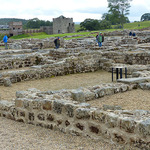

Leave a comment